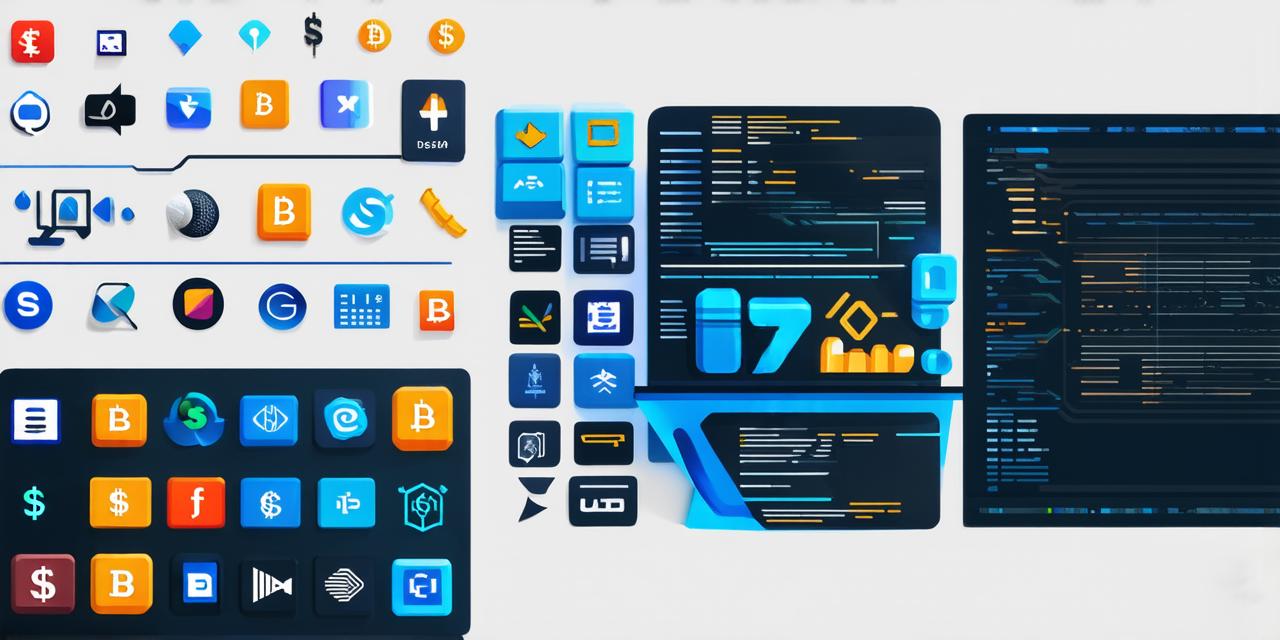How to Get into the Blockchain: A Comprehensive Guide for Developers
The blockchain industry is rapidly growing, and with it comes a need for developers who can build secure, scalable, and efficient blockchain-based solutions. In this comprehensive guide, we will walk you through the steps to get started with blockchain development, from understanding its basics to building your own decentralized applications (DApps).
Table of Contents
- Introduction
- What is Blockchain?
- Why Develop for the Blockchain?
- Blockchain Development Tools and Frameworks
- Building a Decentralized Application (DApp)
- Security Best Practices for Blockchain Development
- Case Studies and Examples of Blockchain Applications
- Conclusion
Introduction
Blockchain technology is a distributed ledger system that allows for secure and transparent transactions without the need for intermediaries. It has revolutionized various industries, from finance to supply chain management, and it’s only going to become more popular in the years to come. In this guide, we will provide you with an overview of blockchain development, including its basics, why it’s worth learning, tools and frameworks to get started, building a decentralized application (DApp), security best practices, and real-life examples of blockchain applications.
område:
What is Blockchain?
Blockchain is a decentralized database that stores data in blocks that are linked together chronologically. Each block contains a unique set of information, such as transaction details, and it’s secured using cryptographic algorithms. The decentralization of blockchain means that there is no central authority controlling the network, making it resistant to tampering and hacking.
område:
Why Develop for the Blockchain?
Developing for the blockchain offers several advantages, such as:
- Security
- Transparency
- Decentralization
- Scalability
Security
Blockchain technology provides a secure platform for storing and transferring sensitive data, making it ideal for applications that require high levels of security, such as financial transactions.
Transparency
All transactions on the blockchain are publicly available, providing transparency and accountability. This makes it easier to track and verify transactions, reducing the risk of fraud.
Decentralization
Blockchain technology is decentralized, meaning that there is no central authority controlling the network. This allows for greater flexibility and control over the network, making it ideal for applications that require a high degree of autonomy.
Scalability
Blockchain technology can handle large volumes of transactions, making it suitable for applications that require high levels of scalability, such as supply chain management.
område:
Blockchain Development Tools and Frameworks
There are several tools and frameworks available for blockchain development, including:
- Solidity
- Remix
- Truffle
- Web3.js
- Hyperledger Fabric
Solidity
Solidity is a programming language used for developing smart contracts on the Ethereum network. It’s an open-source language that’s easy to learn and use.
Remix
Remix is an online IDE (Integrated Development Environment) used for developing, testing, and deploying smart contracts on the Ethereum network. It provides a user-friendly interface and supports multiple programming languages.
Truffle
Truffle is a suite of tools used for building, testing, and deploying smart contracts on various blockchain networks. It includes a development environment, testing framework, and deployment tools.
Web3.js
Web3.js is a JavaScript library used for interacting with blockchain networks, such as Ethereum and IPFS. It provides a simple API for accessing blockchain data and executing smart contracts.
Hyperledger Fabric
Hyperledger Fabric is an open-source blockchain framework designed for enterprise applications. It provides a modular architecture and supports multiple programming languages.
område:
Building a Decentralized Application (DApp)
A decentralized application (DApp) is a software application that runs on the blockchain, allowing users to interact with each other without the need for intermediaries. To build a DApp, you will need to follow these steps:
- Choose a blockchain platform
- Define the application requirements
- Develop the smart contract
- Test the smart contract
- Deploy the smart contract
- Develop the user interface
- Deploy the user interface
Choose a blockchain platform
There are several blockchain platforms available, such as Ethereum, Hyperledger Fabric, and Corda. Each platform has its own unique features and capabilities, so it’s important to choose the one that best fits your needs.
Define the application requirements
Before you start building your DApp, you need to define its requirements, such as the user interface, functionality, and security features. This will help you to design a scalable and efficient application.
Develop the smart contract
Smart contracts are self-executing contracts with the terms of the agreement between buyer and seller being directly written into lines of code. You will need to develop a smart contract that defines the rules and logic for your DApp.
Test the smart contract
Once you have developed the smart contract, you need to test it thoroughly to ensure that it’s functioning as expected. This includes testing for security vulnerabilities and performance issues.
Deploy the smart contract
After testing, you can deploy the smart contract on the blockchain network. You will need to set up a wallet and configure the network settings to enable the deployment process.
Develop the user interface
Developing the user interface involves designing and coding the frontend of your DApp. This is where users will interact with your application, so it’s crucial to make it intuitive and user-friendly.
Deploy the user interface
Once you have developed the user interface, you can deploy it on a server or hosting platform. This will make your DApp accessible to users around the world.
område:
Security Best Practices for Blockchain Development
Blockchain development requires a strong focus on security, as any vulnerabilities can lead to significant financial losses or data breaches. Here are some best practices to follow:

- Use secure coding practices
- Test for vulnerabilities
- Keep your code and wallets secure
- Use multi-signature authentication
- Limit access to smart contracts
Use secure coding practices
Always follow secure coding practices when developing your blockchain application. This includes using parameterized queries, validating user input, and avoiding common vulnerabilities like buffer overflows or SQL injection.
Test for vulnerabilities
Thoroughly test your smart contracts and application for vulnerabilities. Use tools like SolidityLint, MythX, or Slither to identify potential issues before deploying your code.
Keep your code and wallets secure
Store your code and private keys in a secure location, and never share them with anyone. Use strong passwords and two-factor authentication to protect access to your accounts.
Use multi-signature authentication
Consider using multi-signature authentication for critical transactions, which requires multiple parties to approve a transaction before it can be executed. This adds an extra layer of security and reduces the risk of unauthorized transactions.
Limit access to smart contracts
Only grant access to your smart contracts to authorized users or applications. Use permissioned blockchains if necessary, and consider implementing access control mechanisms like role-based authorization.
område:
Case Studies and Examples of Blockchain Applications</
